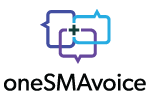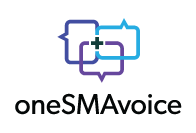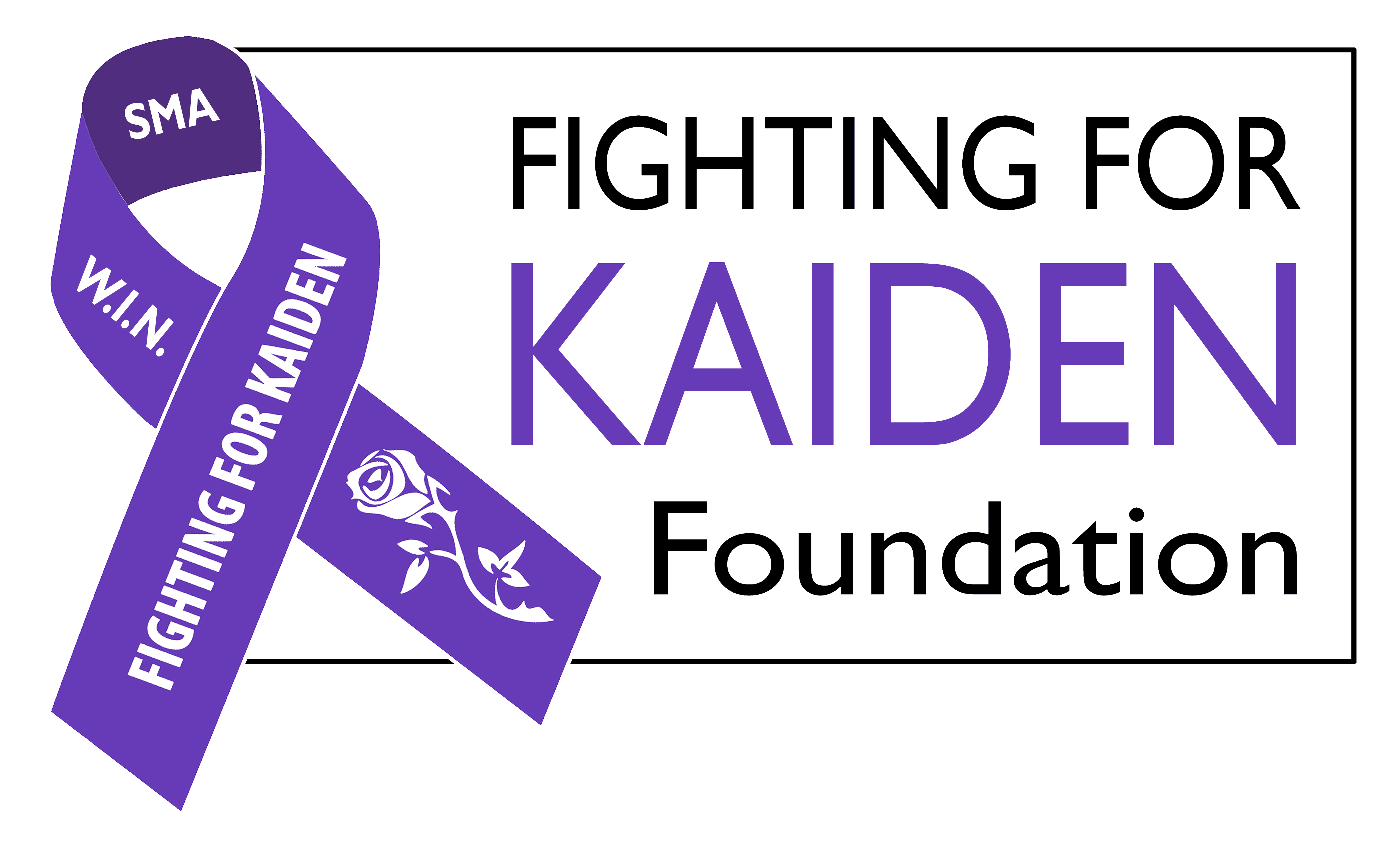DISCLAIMER
The information and materials accessed through or made available for use on any of our Sites, including, any information about diseases, conditions, treatments, or medicines, are for informational purposes only. The Content is not intended to be and is not a substitute for professional medical advice, diagnosis, or treatment, and your participation on our Sites does not create a healthcare professional-patient relationship. You should consult a doctor or other qualified health care professional regarding any questions you have about your health or before making any decisions related to your health or wellness. Call your doctor or 911 immediately if you think you may have a medical emergency.message sent
email sent successfully
| rareLife solutions 606 Post Road East #397 Westport, CT 06880 |
||
| You are receiving this because you have an account on www.oneSMAvoice.com | ||
| If you'd like to unsubscribe and stop receiving these emails click here | ||
A Study of Risdiplam in Infants With Genetically Diagnosed and Presymptomatic Spinal Muscular Atrophy
study id #: NCT03779334
condition: Muscular Atrophy, Spinal
status: Recruiting
purpose:A global study of oral risdiplam in pre-symptomatic participants with spinal muscular atrophy (SMA).
intervention: Risdiplam
results: https://clinicaltrials.gov/ct2/show/results/NCT03779334
last updated: February 04, 2022
start date: August 7, 2019
estimated completion: January 21, 2029
last updated: December 21, 2021
phase of development: Phase 2
size / enrollment: 25
study description: The study is an open-label, single-arm, multicenter clinical study to investigate the efficacy, safety, pharmacokinetics, and pharmacodynamics of risdiplam in infants aged from birth to 6 weeks who have been genetically diagnosed with SMA but are not yet presenting with symptoms. There will be a screening, treatment, open-label extension (OLE) and a follow-up. All participants will receive risdiplam orally once daily for 2 years followed by an OLE phase of at least 3 years and a follow-up, for a total treatment duration of at least 5 years for each participant enrolled.
primary outcomes:
- Percentage of participants with two copies of the survival motor neuron (SMN) 2 gene (excluding the known SMN2 gene modifier mutation c.859G>C) and baseline compound muscle action potential (CMAP) >=1.5 millivolt (mV) who are sitting without support
Sitting is defined as "sits without support for 5 seconds" as assessed in Item 22 of the Bayley Scales of Infant and Toddler Development, Third Edition (BSID-III) Gross Motor Scale - At Month 12
secondary outcomes:
- Percentage of participants developing clinically manifested SMA
At Month 12 and 24 - Time to permanent ventilation and/or death
Up to 7 years - Percentage of participants who are alive without permanent ventilation
At Month 12 and 24 - Percentage of participants alive
At Month 12 and 24 - Percentage of participants who achieve the attainment level of the motor milestones as assessed in the Hammersmith Infant Neurological Examination-2 (HINE-2)
At Month 12 and 24 - Percentage of participants with two copies of the SMN2 gene sitting without support for 5 seconds (independent of the CMAP value at baseline).
At Month 12 - Percentage of participants sitting without support for 5 seconds
At Month 24 - Percentage of participants sitting without support for 30 seconds
At Month 12 and 24 - Percentage of participants standing for at least 3 seconds
At Month 24 - Percentage of participants walking (takes at least 3 steps)
At Month 24 - Percentage of participants demonstrating the ability to achieve a scaled score on BSID-III Gross Motor Subtests within 1.5 standard deviations of chronological reference standard
At Month 24 and 42 - Change from baseline score in the Children's Hospital of Philadelphia Infant Test of Neuromuscular Disorders (CHOP INTEND) motor function scale
At Month 12 - Percentage of participants who achieve a score of 40 or higher, 50 or higher, and 60 or higher in the CHOP INTEND motor function scale
At Month 12 - Percentage of participants who meet CHOP INTEND stopping criteria at any point
Up to Month 24 - Change from baseline in the Hammersmith Functional Motor Scale Expanded (HFMSE) score
At Month 60 - Number and percentage of participants within 3rd percentile of normal range for weight-for-age, length/height-for-age and weight-for-length/height
At Month 12, 24, 36, 48 and 60 - Number and percentage of participants within 3rd percentile of normal range for head circumference-for-age
At Month 12 and 24 - Change from baseline percentiles for weight-for-age, length/height-for-age, and weight-for- length/height
At Month 12, 24, 36, 48 and 60 - Change from baseline percentiles for head circumference- for-age
At Month 12 and 24 - Change from baseline in chest circumference
At Month 12 and 24 - Ratio between chest and head circumferences
At Month 12 and 24 - Percentage of participants with the ability to swallow and to feed orally
At Month 12, 24, 36, 48 and 60 - Change from baseline in compound muscle action potential (CMAP) amplitude
At Month 12 and 24 - Measurement of pharmacodynamic marker levels in blood
Day 1, 56, 196, 364, 728 and at early withdrawal - Percentage of participants with adverse events
Up to 7 years - Ophthalmological examination as appropriate for age
Up to 7 years - Plasma concentration of risdiplam and its metabolites to characterize the PK profile
Up to 7 years
inclusion criteria:
• Eligible Sexes: all
Males and females aged from birth (1 day) to 6 weeks (42 days) of age at the time of first dose (Day 1); a minimum age of 7 days at first dose is required for the first infant to be enrolled
Gestational age of 37-42 weeks for singleton births; gestational age of 34-42 weeks for twins
Body weight >= 3rd percentile for age, using appropriate country-specific guidelines
Genetic diagnosis of 5q-autosomal recessive SMA, including confirmation of homozygous deletion or compound heterozygosity predictive of loss of function of the SMN1 gene
Absence of clinical signs or symptoms at screening (Day -42 to Day -2) or at baseline (Day -1) that are, in the opinion of the investigator, strongly suggestive of SMA
Receiving adequate nutrition and hydration at the time of screening, in the opinion of the investigator
Adequately recovered from any acute illness at baseline and considered well enough to participate in the study, in the opinion of the investigator
Able and expected to be able to safely travel to the study site for the entire duration of the study and in accordance to the frequency of required study visits, in the opinion of the investigator
Able to complete all study procedures, measurements, and visits, and the parent (or caregiver), in the opinion of the investigator, has adequately supportive psychosocial circumstances
Parent (or caregiver) is willing to consider nasogastric, naso-jejunal, or gastrostomy tube placement during the study to maintain safe hydration, nutrition, and treatment delivery, if recommended by the investigator
Parent (or caregiver) is willing to consider the use of non-invasive ventilation during the study, if recommended by the investigator
exclusion criteria: Criteria:
Concomitant or previous participation in any investigational drug or device study at any time
Concomitant or previous administration of an SMN2-targeting antisense oligonucleotide, SMN2-splicing modifier, or gene therapy either in a clinical study or as part of medical care
Presence of significant concurrent syndromes or diseases
In the opinion of the investigator, inadequate venous or capillary blood access for the study procedures
Requiring invasive ventilation, tracheostomy or awake non-invasive ventilation
Awake hypoxemia (SaO2 < 95%) with or without ventilator support
Multiple or fixed contractures and/or hip subluxation or dislocation at birth
Systolic blood pressure or diastolic blood pressure or heart rate considered to be clinically significant by the investigator
Presence of clinically relevant ECG abnormalities before study drug administration; corrected QT interval using Bazett's method > 460 ms; personal or family history (first degree relatives) of congenital long QT syndrome indicating a safety risk for patients as determined by the investigator. First-degree atrioventricular block or isolated right bundle branch block are allowed
The infant (and the mother, if breastfeeding the infant) taking any inhibitor of CYP3A4 taken within 2 weeks, any inducer of CYP3A4 taken within 4 weeks, any OCT 2 and MATE substrates within 2 weeks and known FMO1 or FMO3 inhibitors or substrates
Clinically significant abnormalities in laboratory test results
Ascertained or presumptive hypersensitivity to risdiplam or to the constituents of its formulation
Treatment with oral salbutamol or another beta-2 adrenergic agonist taken orally for SMA is not allowed. Use of inhaled beta-2 adrenergic agonists is allowed
Infants exposed to drugs with known retinal toxicity given to mothers during pregnancy (and lactation) should not be enrolled. Anticipated need for drugs known to cause retinal toxicity during the study.
Diagnosis of ophthalmic diseases
sponsor: Hoffmann-La Roche
contacts: Reference Study ID Number: BN40703 Https://forpatients.roche.com/, 888-662-6728 (U.S. and Canada), [email protected]
investigators: Clinical Trials,Hoffmann-La Roche
trial center locations: United States,Australia,Belgium,Brazil,China,Italy,Poland,Russian Federation,Saudi Arabia,Taiwan
-
A Study of Risdiplam in Infants With Genetically Diagnosed and Presymptomatic Spinal Muscular Atrophy
-
A Study of Risdiplam in Infants With Genetically Diagnosed and Presymptomatic Spinal Muscular Atrophy
-
A Study of Risdiplam in Infants With Genetically Diagnosed and Presymptomatic Spinal Muscular Atrophy
-
A Study of Risdiplam in Infants With Genetically Diagnosed and Presymptomatic Spinal Muscular Atrophy
-
A Study of Risdiplam in Infants With Genetically Diagnosed and Presymptomatic Spinal Muscular Atrophy
-
A Study of Risdiplam in Infants With Genetically Diagnosed and Presymptomatic Spinal Muscular Atrophy
-
A Study of Risdiplam in Infants With Genetically Diagnosed and Presymptomatic Spinal Muscular Atrophy
-
A Study of Risdiplam in Infants With Genetically Diagnosed and Presymptomatic Spinal Muscular Atrophy
-
A Study of Risdiplam in Infants With Genetically Diagnosed and Presymptomatic Spinal Muscular Atrophy
-
A Study of Risdiplam in Infants With Genetically Diagnosed and Presymptomatic Spinal Muscular Atrophy
-
A Study of Risdiplam in Infants With Genetically Diagnosed and Presymptomatic Spinal Muscular Atrophy
-
A Study of Risdiplam in Infants With Genetically Diagnosed and Presymptomatic Spinal Muscular Atrophy
-
A Study of Risdiplam in Infants With Genetically Diagnosed and Presymptomatic Spinal Muscular Atrophy
-
A Study of Risdiplam in Infants With Genetically Diagnosed and Presymptomatic Spinal Muscular Atrophy
-
A Study of Risdiplam in Infants With Genetically Diagnosed and Presymptomatic Spinal Muscular Atrophy
-
EducationOrganotypic Spinal Cord Cultures: An in Vitro 3D Model to Preliminary Screen Treatments for Spinal Muscular AtrophySpinal muscular atrophy (SMA) is a sever...
-
EducationAxonal Excitability Changes in Children With Spinal Muscular Atrophy Treated With NusinersenSpinal muscular atrophy (SMA) is associa...
-
People & PlacesCharlotte Jane Sumner, MDDr. Charlotte Sumner is a Professor of N...
-
EducationAdult-Onset Non-5q Proximal Spinal Muscular Atrophy: A Comprehensive ReviewBackground: Adult-onset spinal muscular ...
-
News & MeetingsFDA-Approved Treatment Provides Life-Saving Miracle for Girl With Spinal Muscular AtrophyAlex says her daughter made it to Norton...
-
People & PlacesMatthew Harms, MDMatthew Harms, MD is an Associate Profes...
-
People & PlacesBoston Children’s Hospital – Spinal Muscular Atrophy ProgramThe Spinal Muscular Atrophy Program at B...
send a message
Reset password
password changed successfully!

please log in with your email address and new password.
your activation key expired

this confirmation key has expired. please try to log in again or resend confirmation email.
confirmation email sent

a confirmation email has been sent to your inbox. click the link in the email to activate your account.
can't find the email? be sure to check your spam folder.
password reset email sent

an email has been sent to you with a link to reset your password.
can't find the email? be sure to check your spam folder.

If you are a doctor or other qualified health care professional, you should not offer any medical advice or treatment on our Sites, nor should you allow the content of our Sites to substitute for your own medical judgment. Please thoroughly review the information provided on our Sites before deciding whether any of the products, services, or treatments therein are right for you or others.
your account is now activated!

Log in
This feature is only available to members.
you haven't confirmed your email address yet. resend confirmation email









